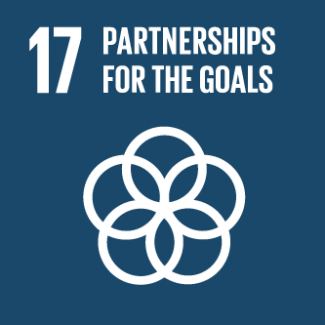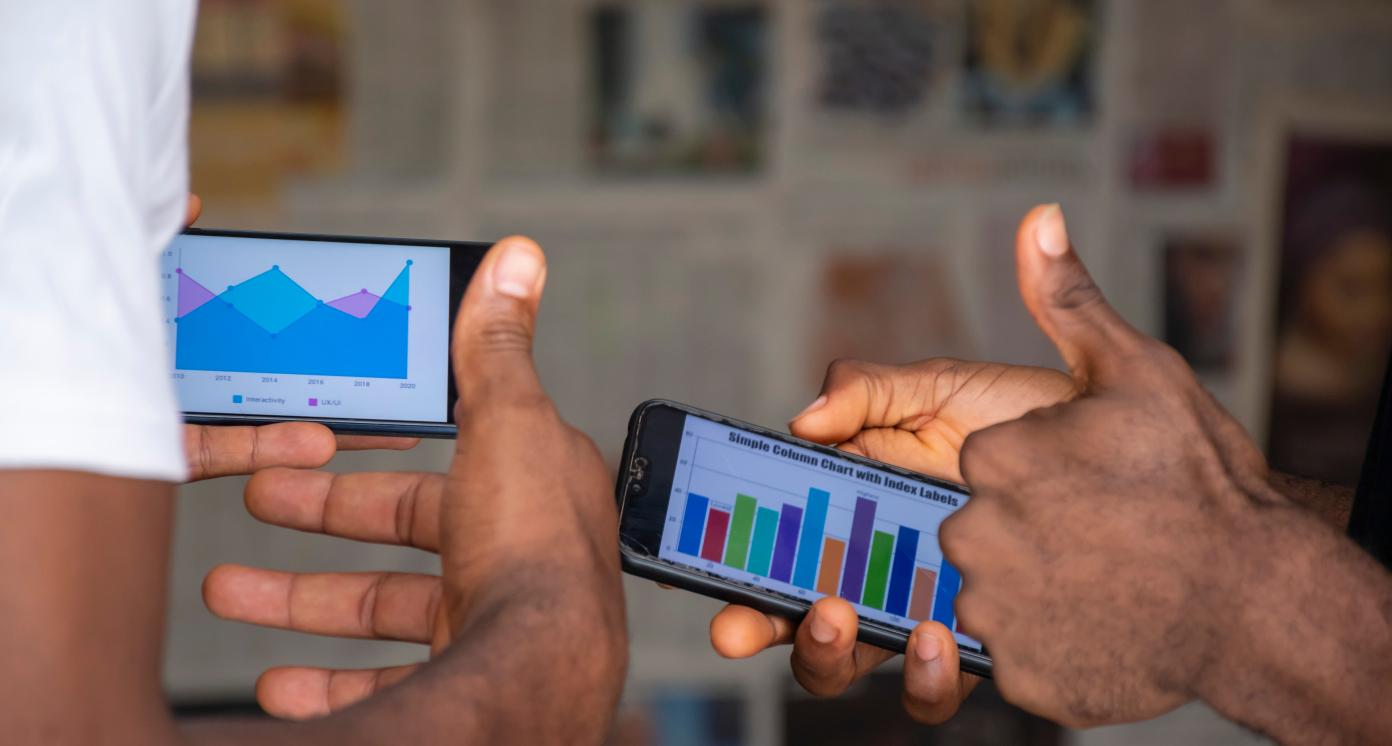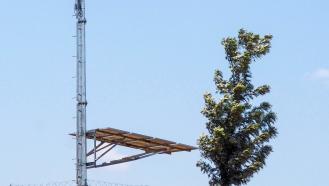Mobile broadband distribution





Business Model Description
Develop mobile broadband infrastructure where assets are built and rented to users.
Expected Impact
Significant effects across many sectors, improving ease of doing business and access to information and services.
How is this information gathered?
Investment opportunities with potential to contribute to sustainable development are based on country-level SDG Investor Maps.
Disclaimer
UNDP, the Private Finance for the SDGs, and their affiliates (collectively “UNDP”) do not seek or solicit investment for programmes, projects, or opportunities described on this site (collectively “Programmes”) or any other Programmes, and nothing on this page should constitute a solicitation for investment. The actors listed on this site are not partners of UNDP, and their inclusion should not be construed as an endorsement or recommendation by UNDP for any relationship or investment.
The descriptions on this page are provided for informational purposes only. Only companies and enterprises that appear under the case study tab have been validated and vetted through UNDP programmes such as the Growth Stage Impact Ventures (GSIV), Business Call to Action (BCtA), or through other UN agencies. Even then, under no circumstances should their appearance on this website be construed as an endorsement for any relationship or investment. UNDP assumes no liability for investment losses directly or indirectly resulting from recommendations made, implied, or inferred by its research. Likewise, UNDP assumes no claim to investment gains directly or indirectly resulting from trading profits, investment management, or advisory fees obtained by following investment recommendations made, implied, or inferred by its research.
Investment involves risk, and all investments should be made with the supervision of a professional investment manager or advisor. The materials on the website are not an offer to sell or a solicitation of an offer to buy any investment, security, or commodity, nor shall any security be offered or sold to any person, in any jurisdiction in which such offer would be unlawful under the securities laws of such jurisdiction.
Case Studies
Country & Regions
- Nigeria: Countrywide
Sector Classification
Technology and Communications
Development need
Broadband services are crucial for economic growth, security and information dissemination. However, several challenges persist. In 2010, 3G mobile internet services were available in fewer than 20 towns and cities; no broadband infrastructure framework was in place; there were fewer than 15 million internet subscriptions across the country; and about 22,000 km of intercity fibre had been deployed.(1)
Policy priority
Nigeria's telecommunications sector has grown to contribute 10.6% to gross domestic product (GDP). This growth was driven largely by four major mobile network operators (MNOs) who provide services to over 99.5% of 184.7 million active lines (NCC, December 2019), with 126 million of those lines (68%) connected to the internet (2G+/3G/4G).(2)
Gender inequalities and marginalization issues
The proportion of women using the internet was17.3% in 2017, while the proportion of men using the internet was 32%.(11)
Investment opportunities introduction
The information and communication technology (ICT) industry has grown phenomenally, from a teledensity of 1.89% in 1993 to 124.29% in 2018, contributing an annual average of 9% to gross domestic product (GD).(3) With a population of about 200 million, less than 60% of whom are active internet users, the ICT industry presents attractive investment opportunities.(3)
Key bottlenecks introduction
Effective and vibrant telecommunication networks are vital for driving productivity across all sectors. The major challenges stifling the performance of this sector are poor legal and regulatory frameworks, and weak institutional coordination mechanisms prohibiting synergies among ICT-based infrastructure.(4)
Internet Media and Services
Policy priority
Nigeria's broadband penetration is about only 31.5%. However, the government aims to increase this to 70% by 2021.(5)
Internet Media and Services
Pipeline Opportunity
Mobile broadband distribution
Develop mobile broadband infrastructure where assets are built and rented to users.
Business Case
Market Size and Environment
> USD 1 billion
Government aims to increase broadband penetration from 31.5% to 70% by 2021.
Information and communication technology (ICT) investments in Nigeria have increased significantly from USD 50 million in 1999 to over USD 35 billion in 2016. Similarly, active internet subscriptions are steadily increasing.(6)
Nigeria's broadband penetration is about only 31.5%. However, the government aims to increase this to 70% by 2021.(5)
Teledensity was 96.76% at December 2019. The sector contributed about 9.2% to gross domestic product (GDP) in Q3 2019.(5) Additionally, Nigeria has been ranked as the fastest growing mobile market in the world for five consecutive years.(7)
Indicative Return
5% - 10%
The estimated return rate for investors is 7.1% - 9.1%. This rate is a benchmark calculated as a cost of equity, reflecting an average return required by investors active in the subsector.(8)
Investment Timeframe
Short Term (0–5 years)
Based on studied benchmark projects, investments in mobile broadband services can see cashflow within a year once fibre cables have been installed.(8)
Ticket Size
> USD 10 million
Market Risks & Scale Obstacles
Business - Supply Chain Constraints
Market - Highly Regulated
Impact Case
Sustainable Development Need
The role of broadband services is crucial for economic growth due to the increase in productivity it creates across several sectors including healthcare delivery, education, security and information dissemination. However, challenges persist including lack of a robust fixed infrastructure network.
Metro fibre networks currently account for less than 25% of the total fibre distances in the country. They are concentrated in major cities such as Lagos, Abuja, Port Harcourt, and within Edo and Ogun states. Other areas remain unserved or underserved. (2)
Access to fibre networks within 5 km of the population currently stands at an average of 39% reach, with a high of 85% in Lagos State and a low of 12% in Jigawa State. Last mile FTTx (fibre-to-the-x) connection rate is low and fibre-to-the-tower connection rates are also low compared with other African countries.(2)
Gender & Marginalisation
The proportion of women using the internet was 17.3% in 2017, while the proportion of men using the internet was 32%.(11)
Expected Development Outcome
Investments could increase access to internet services, increase ease of doing business and improve information and communication technology (ICT) infrastructure and close the ICT gap.
Gender & Marginalisation
Investments could help increase women's and female students' access to Internet services. Women and female students have lower broadband subscription than men.
Primary SDGs addressed

9.c.1 Proportion of population covered by a mobile network, by technology
52% in 2015.(12)
2020 performance benchmark: 100%.(12)

17.6.1 Fixed Internet broadband subscriptions per 100 inhabitants, by speed
31.96 subscriptions (per 100 population) in 2018.(11)
100% (13)
Secondary SDGs addressed



Directly impacted stakeholders
People
Corporates
Indirectly impacted stakeholders
Public sector
Outcome Risks
Investments could increase green house gas emissions because information and communication technology (ICT) infrastructure consume large amounts of electricity and cause environmental hazards linked with radiation from communication infrastructure.
Impact Risks
Unexpected impact risk: In the short run, mobile broadband distribution may focus on urban/semi-urban areas, increasing gaps in access to internet services in rural communities.
Efficiency risk given current poor infrastructure and limited technical know-how as well as high public engagement.
Execution risk if activities are not delivered as planned and do not result in the desired outcomes given poor internet infrastructure.
Impact Classification
What
The outcome is likely to be positive because investments in information and communication technology (ICT) will increase access to information, improve infrastructure, contribute to GDP growth and increase employment opportunities.
Who
The entire population will benefit. Rural communities with little or no access to mobile data and connectivity will also benefit significantly .
Risk
Lack of protection of digital rights, exchange rate volatility, right of way issues, fibre cuts
Impact Thesis
Significant effects across many sectors, improving ease of doing business and access to information and services.
Enabling Environment
Policy Environment
Economic Recovery and Growth Plan: This plan prioritizes investment in cutting-edge information and communication technology (ICT) standards and has encouraged ICT penetrations among all socio-economic levels.(4)
Economic Recovery and Growth Plan: Policy priorities also include expanding current coverage of active mobile broadband subscription per 100 from 20.95% to 50%.(4)
National Broadband Plan: This plan also government's priority to expand broadband connectivity across the country.(2)
Financial Environment
Financial incentives: The Nigerian Investment Promotion Commission (NIPC) has released new guidelines for applying for Pioneer Status Incentives in Nigeria, to attract investments to the information and communication technology (ICT) sector.(9)
Fiscal incentives: Certain benefits are provided including 3-year tax holidays, tax-free dividends and capital allowances.(9)
Regulatory Environment
Nigerian Communications Commission is the independent national regulatory authority for the telecommunications industry. It is responsible for creating an enabling environment for competition among operators while ensuring provision of qualitative and efficient telecommunications services.(7)
Nigerian Communications Act 2003 (NCA) 2003: Under section 70 of the NCA 2003, the Commission is empowered to make and publish regulations on matters such as, but not limited to, written authorizations, permits, assignments and licenses and so on.(7)
Marketplace Participants
Private Sector
Y Combinator Continuity, Y Combinator Continuity, Lynett Capital, Social Capital, Western Technology Investment, Friále, Golden Palm Investments, IHS Towers, MTN, GLO, AirTel, 9Mobile, Microsoft, Cisco, Smile, Ntel
Government
Galaxy Backbone, Nigerian Communications Satellite (NigComSat), Nigerian Space Research and Development Agency (NSRDA)
Target Locations
Nigeria: Countrywide
References
- (1) Nigerian Communications Commission (2017). https://www.ncc.gov.ng/thecommunicator/index.php?option=com_content&view=article&id=965:n400b-broadband-bourse&catid=25&Itemid=179
- (2) Federal Republic of Nigeria (2020). Nigerian National Broadband Plan 2020 – 2025.
- (3) Nigerian Investment Promotion Commission (2020). Opportunities - services. https://nipc.gov.ng/opportunities/services/
- (4) Federal Republic of Nigeria (2017). Economic Recovery and Growth Plan 2017 - 2020. Abuja: Ministry of Budget and National Planning.
- (5) Nigerian Communications Commission (2020). Invest in ICT Nigeria - a world of limitless possibilities. https://www.ncc.gov.ng/documents/765-invest-in-ict-nigeria-a-world-of-limitless-possibilities/file
- (6) Nigerian Investment Promotion Commission (2020). Nigeria targets $50 billion ICT investment by 2018. https://nipc.gov.ng/2016/10/28/nigeria-targets-50-billion-ict-investment-2018/
- (7) Nigerian Communications Commission (2017). https://www.ncc.gov.ng/thecommunicator/index.php?option=com_content&view=article&id=965:n400b-broadband-bourse&catid=25&Itemid=179
- (8) PwC analysis based on Prof. A. Damodaran data, 2020.
- (9) Perchstone & Graeys (2018). Nigeria: Tech start-ups - understanding the ICT tax regimes. https://www.mondaq.com/nigeria/corporate-tax/691392/tech-start-ups-understanding-the-ict-tax-regimes
- (10) Globacom (2021). https://www.gloworld.com/ng
- (11) Federal Republic of Nigeria (2020). Integration of the SDGs into National Development Planning: A Second Voluntary National Review (2020). https://sustainabledevelopment.un.org/content/documents/26309VNR_2020_Nigeria_Report.pdf
- (12) Federal Republic of Nigeria (2017). Implementation of the SDGs: a national voluntary review. https://sustainabledevelopment.un.org/content/documents/16029Nigeria.pdf
- (13) Sachs, J., Schmidt-Traub, G., Kroll, C., Lafortune, G., Fuller, G., Woelm, F (2020). The Sustainable Development Goals and COVID-19. Sustainable Development Report 2020. Cambridge: Cambridge University Press. https://dashboards.sdgindex.org/profiles/NGA
















